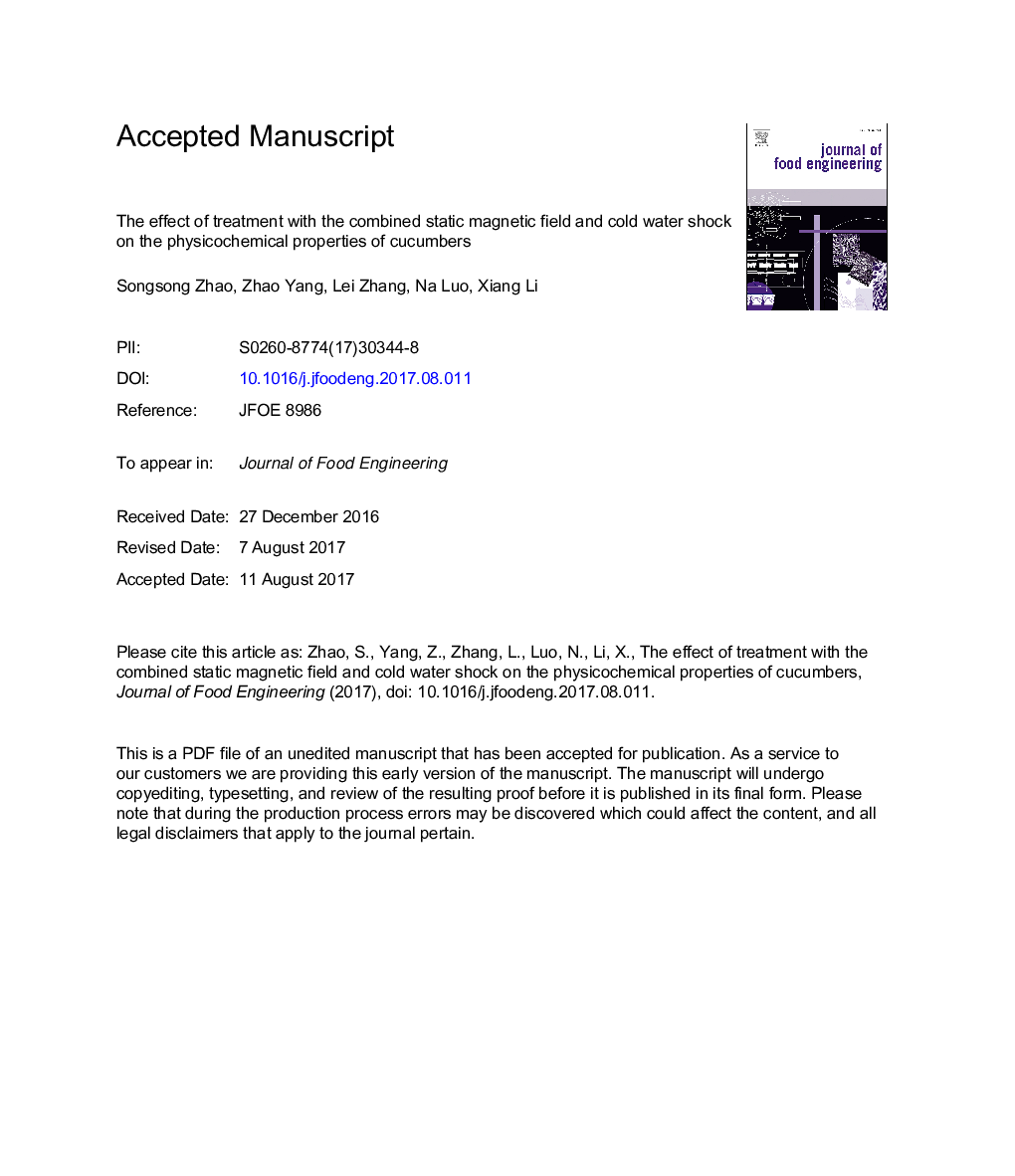| Article ID | Journal | Published Year | Pages | File Type |
|---|---|---|---|---|
| 4908779 | Journal of Food Engineering | 2018 | 34 Pages |
Abstract
Based on the mechanism of temperature shock treatment and electromagnetic effect for food preservation, this paper developed a novel food preservation method by combining static magnetic field with low magnetic flux density and low-temperature water shock to process the fresh postharvest vegetable. Compared with the single cold-water shock treatment (CST, Tw = 2 °C, Ï = 40 min), the static magnetic field and cold-water shock treatment (SMCT, B = 70 Gs, Tw = 2 °C, Ï = 40 min) caused an increase of cooling-rate of cucumbers' tissues during treatment. Weight loss of SMCT was also lower than that of CST during storage. Furthermore, decay incidence and color difference of SMCT were about 40.2% and 10.6% lower than that of CST. Activities of catalase and superoxide dismutase for SMCT were higher than that of CST, which caused a reduction of malondialdehyde. Experimental results confirmed that SMCT had a positive influence on pre-cooling, preservation quality and physicochemical properties of cucumbers.
Keywords
SMCTPreservation qualityTCADTTTBACATdl-dithiothreitolCarbon dioxide (PubChem CID: 280)PVPMDACCDCSttrichloroacetic acidHeat and mass transferMagnetic flux densityCarbon dioxideResponse surface methodologyRSMSODSuperoxide dismutaseCentral composite designEnzyme activitymalondialdehyde (PubChem CID: 10964)malondialdehydeStatic magnetic fieldpolyvinyl pyrrolidoneCatalaseCO2control group
Related Topics
Physical Sciences and Engineering
Chemical Engineering
Chemical Engineering (General)
Authors
Songsong Zhao, Zhao Yang, Lei Zhang, Na Luo, Xiang Li,
